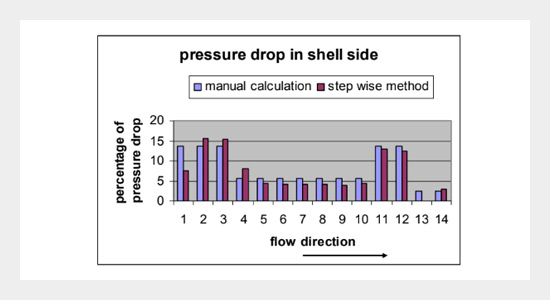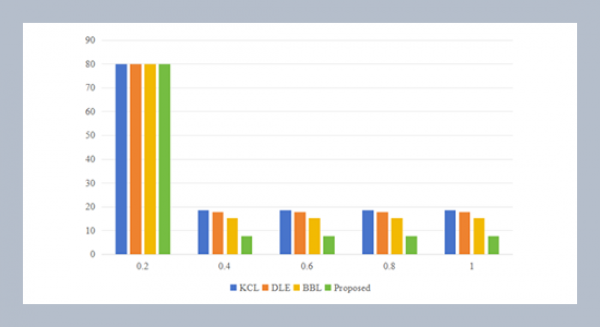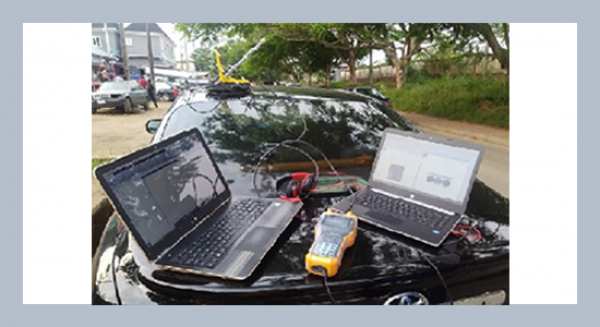M. H. Karimi Donaa* and M. R. Jalaliradb aResearch Institute of Petroleum Industry, West Blvd., Near Azadi Sports Complex, Tehran, Iran
bInstitute of Thermodynamics and Thermal Engineering (ITW), University of Stuttgart, Pfaffenwaldring Stuttgart, Germany
Download Citation:
|
Download PDF
In this study manual calculation for both shell and tube, sides of a single-phase shell and tube heat exchanger are conducted. The calculations are made using Aspen B-JAC software, results of step-wise method computations are compared with manual calculations. Results show that although more accurate methods like step-wise method include many details in calculations, difference between the yielded results and experimental-based algorithms like Bell-Delaware’s method is acceptable.ABSTRACT
Keywords:
Shell and tube; heat exchanger; step-wise method; manual calculation.
Share this article with your colleagues
[1] Taborek, J. 1983. “Heat exchanger Design Hand Book”. Vol. 3, part 3.3, Thermal and Hydraulic Design of Heat Exchangers. Hemisphere Publishing Corporation, Washington, New York, London.REFERENCES
[2] Grimison, E. D. 1937. Correlation and Utilization of New Data of Flow Resistance and Heat Transfer for Cross-Flow of Gases over Tube Banks. Journal Heat Transfer, 59, 7: 583-594.
[3] Short, B. E. 1943. “Heat Transfer and Pressure Drop in Heat Exchangers”. University of Texas Bull. 1943, 4324.
[4] Donohue, D. A. 1949. Heat Transfer and Pressure Drop in Heat Exchangers. Journal of Industrial and Engineering Chemistry, 41, 11: 2499-251.
[5] Kern, D. Q. 1950. “Process Heat transfer”. McGraw-Hill, New York.
[6] Donohue, D. A., Pet. Refiner, part 1, August 1955; part 2, October 1955; part 3, November 1955; part 4, January 1956.
[7] Tinker, T. 1951. “Shell side characteristics of shell and tube heat exchangers, Part І, ІІ and ІІІ, General discussion of heat transfer”. Proc. Institution of mechanical engineers, London.
[8] Bell, K. J. 1963. “Final Report of the Cooperative Research Program on Shell and Tube Heat Exchangers”. University of Delaware Eng. Exp. Sta. Bull. 5.
[9] Leong, K. C., Toh, K. C., and Leong, Y. C. 1998. Shell and Tube Heat Exchanger Design Software for Educational applications. International Journal of Engineering Education, 14, 3: 217-224.
[10] Serna, M. and Jimenez, 2005. A compact formulation of the Bell Delaware method for Heat Exchanger design and optimization. Chemical Engineering Research and Design, 83, 539-550.
[11] Guo, J. , Lin, C., and Xu, M. T. 2009. Optimization design of shell-and-tube heat exchanger by entropy generation minimization and genetic algorithm. Applied Thermal Engineering, 29: 2954-2960.
[12] José M. Ponce-Ortega, Medardo Serna-González, and Arturo Jiménez-Gutiérrez. 2009. Use of genetic algorithms for the optimal design of shell-and-tube heat exchangers. Applied Thermal Engineering, 29: 203-209.
[13] TEMA. 1998. Standards of Tubular Exchanger Manufacture Association, seventh edition. New York.
[14] Taborek, 1983. “Heat exchanger Design Hand Book”. Vol. 2, part 2.2.7, Fluid Mechanics and Heat Transfer. Hemisphere Publishing Corporation, Washington, New York, London.
ARTICLE INFORMATION
Received:
2013-09-04
Revised:
2014-03-11
Accepted:
2014-03-12
Available Online:
2014-06-01
Dona, M.H.K., Jalalirad, M.R. 2014. Software evaluation via a study of deviations in results of manual and Computer-Based Step-Wise method calculations for shell and tube heat exchangers. International Journal of Applied Science and Engineering, 12, 117–126. https://doi.org/10.6703/IJASE.2014.12(2).117
Cite this article:















